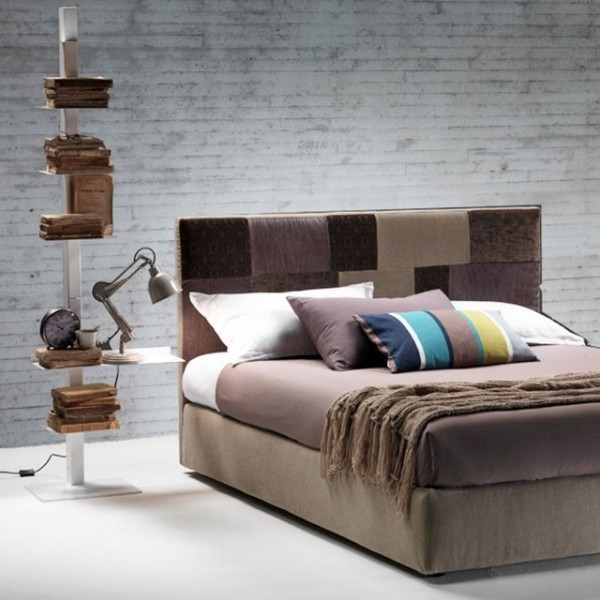
Resting your head on it, you’ll notice that it strikes a great balance between supportiveness and a bit of cushion. The pillow doesn’t have that sink-in sensation associated with memory foam-instead it has a very buoyant foam surface. I, too, noticed the cube’s springy texture even in my relatively short bout with it.

Thanks to the Pillow Cube, she got a better night’s sleep than she’d had for weeks. “The more firm and squared pillow shape provides support for keeping my neck slightly more upright,” she says. Its shape and texture are key, in her experience. “It’s soft where it needs to be, but firm enough that it still supports my neck, head, and shoulders particularly while side sleeping.” She previously combined two or three old pillows in hopes of achieving the support she immediately found when sleeping with this one. For Sofia, who tends to sleep in a way that she describes as “contorted,” the Pillow Cube is a dream. Sofia loves the thing, and says it’s on the holiday wishlist she’s passing off to her partner this year. If Pillow Cube works for you, it will really work. The Pillow Cube's shape makes it a great option for some. Pillow Cubes come in a polyester cover, though you’ll probably still want to pop a pillowcase on top of it. The Pillow Cube is made from a solid piece of foam, unlike our all-time favorite Coop Home Goods Original pillow, which are endlessly adjustable because of the shredded foam filling. (While these guidelines are helpful, I think it’s more a matter of frame size and personal preference than just height, but we’ll get into that.) The standard option is 5 inches tall, and suggested for folks that are 5-foot-4 to 6-foot-3, and the thick option, which is 6 inches tall, is best for those 6-foot-4 or taller. The Pro also comes in “standard” and “thick” options. The quiz directed me to the 4-inch Pillow Cube Pro, which is the “thin” option that’s designed for people who are 5-foot-3-inches or shorter-though I’m actually 5-foot-9. If you’re looking to purchase the full-size version, you can take a quick online quiz to determine which size will best fit your needs. It has a travel version, called the “ Pillow Cube Classic” as well as a “pro” option (the one we reviewed), which is designed for daily use and comes in different thicknesses. Today, it manufactures a variety of foam pillows-all of which are some variation of a cube-that are designed for side sleepers. The company launched as a Kickstarter campaign in 2019. If you hadn’t guessed it: Pillow Cube isn’t your traditional pillow. And consult our pillow buying guide, where you can learn more about how we test pillows and additional factors to consider as you shop.Pillow Cube launched in 2019 with a Kickstarter campaign.
PILLOW CUBE PRO REVIEW REDDIT FULL
Some are adjustable, meaning you can remove some of the filling to your liking.įor more, check our pillow ratings to see how the full slate of pillows performs in each of CR’s tests. Read on for a closer look at the top pillows from our tests, listed in alphabetical order. And if you have asthma or a dust mite allergy, consider adding a pillow protector.
PILLOW CUBE PRO REVIEW REDDIT HOW TO
Be sure you know how to wash your pillow to keep it in good shape. Pillows need long-term maintenance so they last as long as possible.

“Some aren’t able to bounce back.” That’s reflected in a lower resilience score. “Some pillows will show considerable changes, but fluffing will bring the pillow back to the exact characteristics it had prior to the test,” says Chris Regan, the CR test engineer who oversees pillow testing.

We also evaluate how well pillows hold their shape by placing an evenly distributed 225-pound weight on each one (to simulate the human body) in a room set to 98.6° F (to mimic body heat) for 96 hours.

“The idea is to keep your neck as neutral as possible when you sleep.” “You need to find a pillow that doesn’t crane your neck in any position,” says Joel Press, MD, physiatrist in chief at the Hospital for Special Surgery in New York City. And we use a pressure mat to analyze about 1,600 pressure points, focusing on the contact area between the head and the pillow. We assess how well each one supports the head and neck of people of various sizes-petite, average, and large/tall-whether they sleep on their side or their back. We currently rate more than two dozen pillows from widely available brands, each poked, prodded, and pounded by machines in the lab. Regardless if your pillow is too firm, too soft, or just a bit old and lumpy, swapping it out for a new one that suits you better might help you wake up refreshed in the morning. Sometimes, the biggest barrier between you and a good night’s sleep isn’t your mattress, but what’s under your head.


 0 kommentar(er)
0 kommentar(er)
